The congregation of the leaders of the US, Japan, India and Australia on the sidelines of ASEAN Summit in November 2017 in Manila has been a significant geo-political statement for the Indo-Pacific community. The timing and place for rekindling the old Quadrilateral Strategic Dialogue (QSD) of 2007 is no symbolism. Philippines has been a crucible for China in the 21st Century where it has successfully demonstrated its ‘will’ despite the verdict of Permanent Court of Arbitration (PCA). Having established airfields and missile batteries in the Paracels and Spartalys Islands, development of Scarborough Shoal in the Philippines’ EEZ would be the endgame for control over the entire Western Pacific.
As China’s naval power grows, her proclivity to challenge the prevalent norms reflects her desire to unravel her geographical constraints in the Pacific. Conforming to the delimitation of international waters under the United Nations Convention on the Law of the Sea (UNCLOS) or agreeing to alternate regional rules like the Code of Conduct (CoC) restrains China’s maritime aspirations. The Nine-dash Line and concomitant territorial claims are only a manifestation of her intent that is ably backed by her maritime forces. Her interests in Indian Ocean too have been appreciating due to business investments, burgeoning diaspora and trade. To establish commensurate naval presence in the Indian Ocean, China has been acquiring ports on lease at strategic locales.
These developments in the Pacific and Indian Ocean have coalesced the two oceans into a single strategic continuum, the ‘Indo-Pacific’. As a result, new alliances have started to congeal and nations have been spurred to protect the status quo. The Quadrilateral (QUAD) group comprising Australia, India, Japan and the United States is one such formulation that is gaining traction. The QUAD Summit in Manila was preceded by a large naval exercise ‘Malabar’, which was represented by all but Australia, and followed up with the ‘Raisina Dialogue’ in January 2018 where all four naval chiefs shared the same dais. To an onlooker, QUAD might appear to be a ganging up against China for inane containment, but it is indeed a natural mutation of international relations.
In military terms, QUAD is not a classic alliance. Its essence is pivoted on partnership, bringing together like-minded states that cherish and practice democracy and work for order at sea. Its strength as a partnership gains salience and credibility by the inclusion of India which is not an ally of the US. This can also be gauged by the 2+2 arrangement that India shares with US, Japan and Australia. Thus QUAD is an alignment of interests and not an alliance.
What does QUAD mean for countries in Indo-Pacific
Indo-Pacific willy-nilly conforms to the US Pacific Command (PACOM) area of jurisdiction which encompasses the Western Pacific, the Western Indian coast and all in between. It is also being presumed to be tantamount to the QUAD and leaving out the Western Indian Ocean out of contention, makes the ASEAN and its contiguous South China Sea (SCS) as a cartographic centre of Indo-Pacific or QUAD. However, the recent developments in the SCS have overwhelmed the ASEAN and exposed its fault lines. Besides, their symbiotic relation with China due to the existing aortas of trade has become an obvious restraint for strident actions. South Korea and Taiwan too have similar constraints on issues of hard security, not to mention Bangladesh and Sri Lanka. Though QUAD provides a semblance of stability, overt allegiance would entail collusion and a distancing that would be construed as alignment with China. Small countries in the Indo-Pacific are being swamped by great powers and their competitive strategies thus.
What are the Fault Lines in Quad
What are the fault lines in the present structure of Quad which could preclude the ambition, aspiration and delivery of mandate to its members.
Structural Level - Bilateral relations between these nations are rooted in different context of geo-political and geo-strategic underpinnings, peculiar to their geographical location. Post-Cold War US saw New Delhi as an opportunity shedding away its notion of being part of the Soviet bloc. India too has moved towards market economy for US investment. New Delhi’s decision to engage ASEAN through the ASEAN Regional Forum (ARF) and verity of multi-lateral ties have provided ambient conditions for the US to draw closer to India. On the other hand, US, Japan and Australia enjoy strong bonds, symbolised by alliance. In a sense India is not an alliance partner in a predominantly alliance structure.
Political Level - Being democracies, domestic political constraints can potentially constraint a collective response to a crisis, which the QUAD may be called on to deliver.
Operational Level - QUAD suffers from tyranny of geography, separated by 2000 nm or more. They also must support their national maritime objectives that involve a number of tasks such as coastal security, training, EEZ protection etc., which imposes operational burden and depletes resource for extra-national activities such as the QUAD.
Economic Level - QUAD members are economically enmeshed with China and enjoy bilateral trade and investments in billions of dollars. Such economic interdependence imposes unspecified constrains of collective response to any counter-China initiative.
What are the Deliverables of QUAD
QUAD is currently in its embryonic stage. As it develops into its infancy it would require a variety of discussions and deliberations on issues of convergent nature, where deliverables will be largely shaped by national interest. Under such circumstances the process of identifying issues of common interests have to be deliberated upon in the context of free and open Indo-Pacific at the national, regional, and global levels. The very notion of freedom of operations also encompasses thematics with military, diplomatic, political, economic, developmental and environmental implications. With India in the grouping as a non-alliance partner, QUAD would indeed be a test of aligning national interests.
What are the Possible Structures of QUAD
Since its declaration, QUAD members have had two sets of discussions, Manila and Raisina. Each has disparate priorities which would make operationalising the QUAD a challenge. However, time may be ripe for the QUAD and it could begin with a number of initiatives at three levels – institutional, operation and policy.
Institutional – Regular meeting need to be progressed between the navies to discuss matters of regional security and identify issues of common concern.
Policy - Making available plans to include activities concerning Indo-Pacific, instituting Working Groups to study issues of priority and engaging think tanks to provide track 2.0 support.
Operational – Conduct of exercises, table-tops discussions, training and formulation of SOPs for contingencies.
Proposed Working Groups
If Quad has to endure, convergence will have to be sought through Working Groups (WG) on all salient issues of security: concerning terror, cyber, immigration, transnational crimes, economy, industry, technology, innovations, Intellectual Property Rights (IPR), diplomacy, maritime and weapons of mass destruction (WMD). Since QUAD is not an alliance, countries would have to align their resources and strategies to support their collective objectives. Indicative areas for WGs are as listed below:-
Terror – Terror presents threat to the pluralistic world order by relentlessly pursuing its totalitarian Islamic caliphate, promoting repression, justifying slavery and undermining democratic values. Terrorists are nimble at using virtual and physical networks in order to radicalise individuals and exploit vulnerable populations like the Rohingyas. There is a need to demonstrate multi-national coordination in order to keep such networks under consistent pressure.
Transnational Criminal Organisations (TCO) – TCOs have global supply chains that engage in cyber crime, feed drug cartels, indulge in political subversion and fund terrorism. To deal with TCOs strategic intelligence and multi-lateral coordination plans need to be bolstered.
Cyber Security – Cyber space offers inimical states and non-state actors avenues to wage campaigns against political, social and economic interests of a country. It has the potential to cripple critical infrastructures like transportation, health, electrical grids, banking, business, military, communication and internal security. The need is to identify and quarantine such sources, create redundancies, deter and disrupt malicious actors, improve information sharing between partners and deploy defences.
Immigration and Border Control – Immigration and border control is an essential element of national security, economic prosperity and rule of law. National networks can be aligned by a WG in order to defeat the egregious designs of drug traffickers, criminal cartels and terrorists exploiting porous borders and coastlines. Further, it will add value to national efforts on securing borders, enforcing immigration laws and sanitising transportation conduits.
Economic Transparency – Most countries including the Quad countries have been victim of unfair trade practices such as dumping, non-tariff barriers, forced transfer of technology (ToT), stealing against IPR and unjust mercantile trading blocks. India values open economy that give equal opportunity to all and is based on fair competition, as reiterated by Prime Minister Narendra Modi during the Davos Summit in January 2018. WG could provide the necessary convergence on protection of IPR, digital trade, labour laws, fair trade and free market. It can also be equally effective against multi-national corruption and promote transparent business climate.
Support Military Capabilities – Military capability is a vital component to deter aggression and shape favourable geopolitical environment. Strategic partnership with like-minded countries can help modernise, improve readiness, enhance capacities and win full-spectrum warfare. This will need Quad countries to create military advantages in the Indo-Pacific through information sharing, logistic and maintenance support, and retaining technological edge in land, air, maritime, space and cyber domain to deter or win conflicts.
Diplomacy – In a competitive world diplomacy catalyses economic, political and social connection and helps build enduring advantage. WG can synergise the efforts of the Quad countries by optimising areas requiring forward presence, evolve contingency planning, advance democratic values and interests, deploy economic pressures, sever sources of funding, bring criminals to speedy trials, activate local networks and calibrate international opinion. Maldives crisis is a case in point where a WG could have been effectual in preempting the crisis and garnering a coordinated international response for restoring democracy in the Island.
Intelligence - Working Groups on intelligence will not only be able to synthesise the organic capacities but also offer the needed flexibility for resilience. The Quad Intelligence Network (QIN) could emulate the ‘Five Eyes’ (FVEY) concept for the purpose. This is especially relevant as risks to sovereignty and democratic values emanate from multiple domains and are not necessarily restricted to physical occupation.
WMD – The dangers of WMDs falling in the hands of non-state actors is growing incrementally. The numbers and effectiveness of missiles too have improved and the threat is panoramic. QUAD (WG) could provide a platform for collaboration without destabilising the strategic stability or undermining the strategic relationships in the Indo-Pacific. Besides, counter-terrorism (CT) operations need to be real-time to be able to disrupt the developing plots on WMD, and would require a multi-lateral coordination to track specialists, financers, administrators and facilitators.
Conclusion
China’s present consolidation in Western Pacific is irreversible and has profound strategic implications. In response, upsurge in tri-lateral and multi-lateral partnerships has been a natural consequence; Quad being one such partnership. As a preventive security measure against destabilisation of the security environment through armed conflicts and power shifts among countries of the region, Australia, India, Japan and the United States would have to increase their defense capability and presence in the Indian Ocean. However, a pure military alliance between the US, Japan, Australia and India doesn’t appear to be a feasible option. Hence, to operationalise the QUAD, WGs on important facets of security as mentioned above are required to be setup. Thus WGs would provide flexibility to nations in the QUAD to align their strategies without allying. There also exists promise for ‘QUAD-Plus’ to synergise the efforts of like-minded countries like South Korea, Sri Lanka, Singapore, Vietnam and Indonesia.
(Views expressed are of the author and do not necessarily reflect the views of the VIF)
Image Source: http://www.accesscard.org.uk/providers/quad/



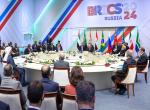
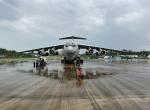


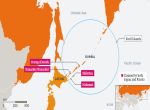
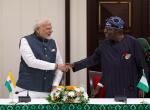

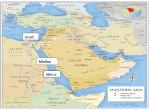
Post new comment